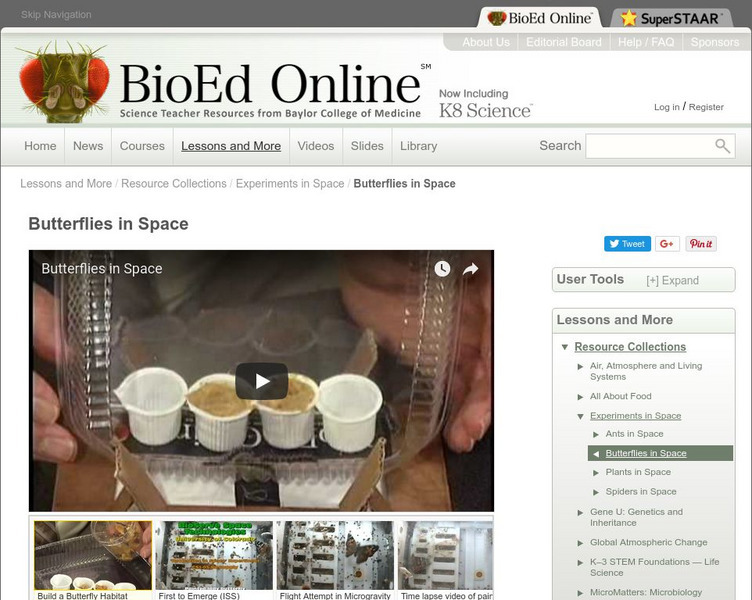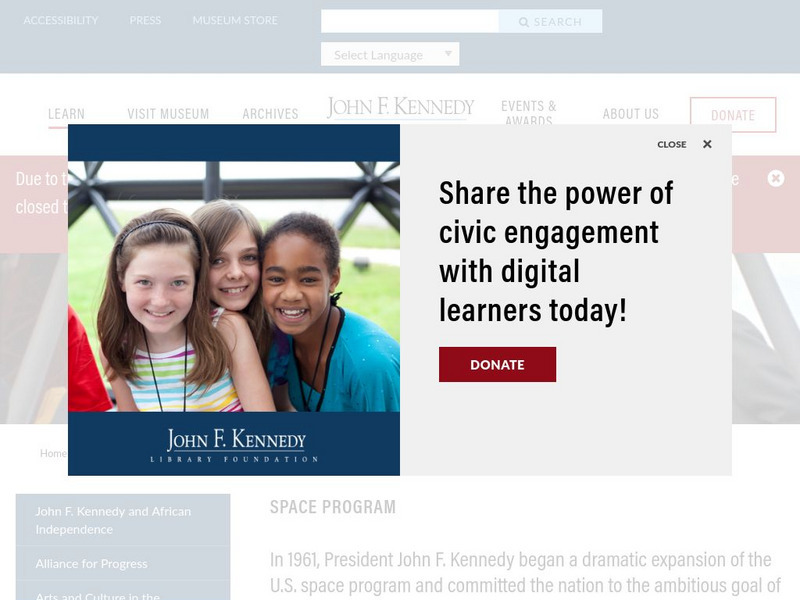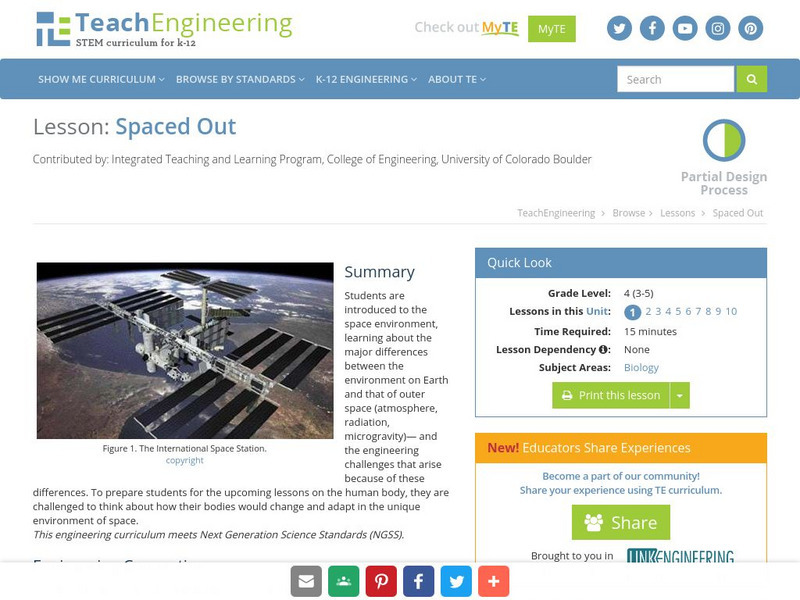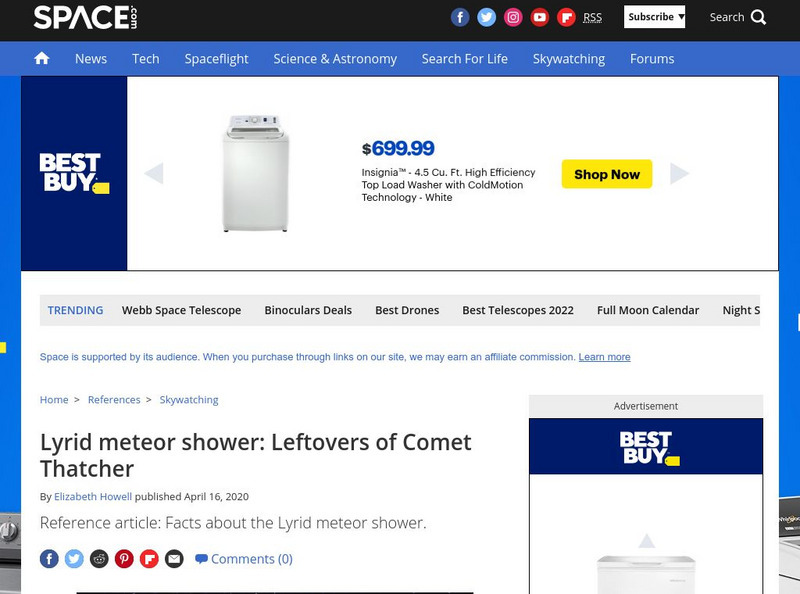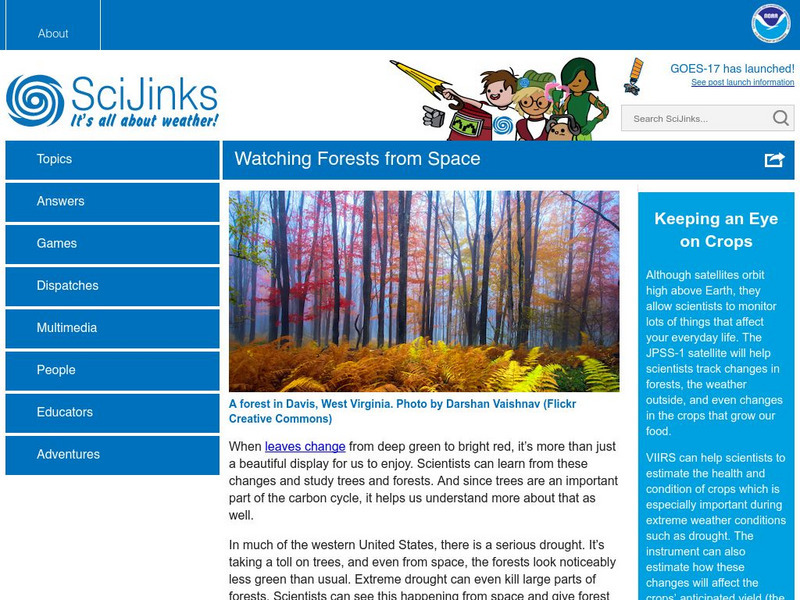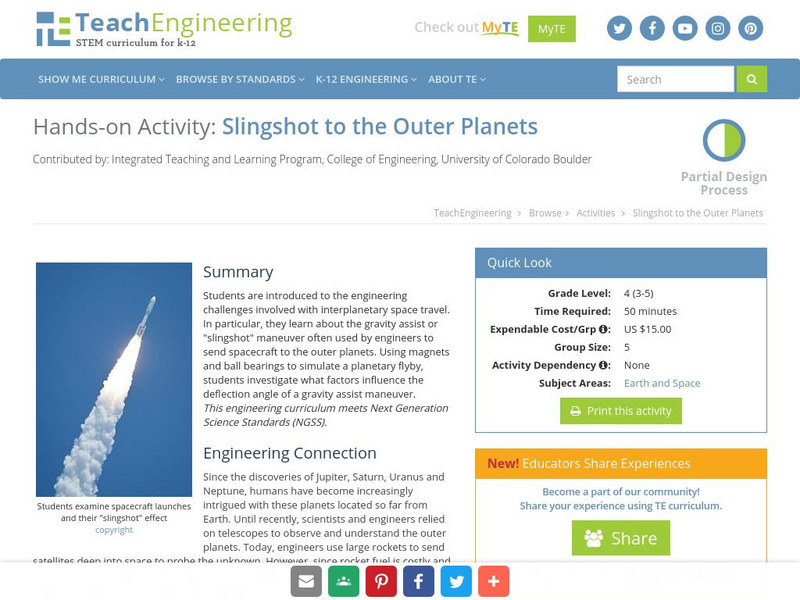DOGO Media
Dogo News: Week of 4 11 16: "Year in Space" Brings Us One Step Closer to Mars
Article reports on some of the things learned from astronaut Scott Kelly's year in space, and how that information will contribute to future space exploration missions. Includes video.
TeachEngineering
Teach Engineering: Space Travel
Students are introduced to the historical motivation for space exploration. They learn about the International Space Station as an example of space travel innovation and are introduced to new and futuristic ideas that space engineers are...
PBS
Pbs Learning Media: Summer Camp: Fill Each Day With Possibilities!
Whether you're looking for music and dance activities, science experiments, family-friendly adventures, or learning about animals (plus more!), you will find media and activity resources in the Camp PBS LearningMedia collection. We've...
BioEd Online
Bio Ed Online: Butterflies in Space
In 2009, four painted lady butterflies flew aboard space shuttle Atlantis to the International Space Station, where they grew and lived. Students can use original photos from the mission to conduct open-ended scientific investigations to...
John F. Kennedy Presidential Library & Museum
John F. Kennedy Presidential Library and Museum: Space Program
In 1957 the Soviet Union launched the satellite Sputnik and had an astronaut orbit the moon a few years later. The U.S. was shocked and vowed to not be left behind. Examine how JFK rallied the country and Congress to get behind the race...
The National Gallery (UK)
National Gallery, London: Ite: Learning Ideas and Outcomes: Subject Focus
This extensive lesson plan uses the painting 'A View of Het Steen in the Early Morning' as a starting point to learning in science. Students will use the work by Reubens to learn about a variety of animals and their habitats.
Other
Your Therapy Source: Personal Space Bubble What Is It and Why Does It Matter?
This resource discusses how to directly instruct the concept of personal space.
Other
Centervention: Personal Space Worksheets for Students in Elementary School
This lesson plan will help young children understand the concept of "personal space" and will be reinforced via reproducible worksheets.
TeachEngineering
Teach Engineering: Spaced Out
This lesson introduces students to the space environment. It covers the major differences between the environment on Earth and that of outer space and the engineering challenges that arise because of these discrepancies. In order to...
Alabama Learning Exchange
Alex: Lost in Space a Solar System Study
During this technology based lesson, students navigate the Internet to learn interesting information about the solar system. They use the information to complete a worksheet and to create a puzzle or challenge for their classmates.
NOAA
Noaa: Space Weather Prediction Center: A Primer on Space Weather
The Space Environment Center put together an introduction to our sun and space weather that it creates during it's 11 year weather cycle. Learn about different solar anomalies and the effects they have on earth with pipelines, geologic...
TeachEngineering
Teach Engineering: Spacecraft Design: Beat the Heat
To understand the challenges of satellite construction, student teams design and create model spacecraft to protect vital components from the harsh conditions found on Mercury and Venus. They use slices of butter in plastic eggs to...
Science Buddies
Science Buddies: Project Ideas: Learn to Design an Ion Engine
The goal of this electricity and electronics science fair project is to understand how ions are used to propel spacecraft in space, and to use a NASA online simulator to design your own ion engine. The Science Buddies project ideas are...
Government of Canada
Canadian Space Agency: Cloud Sat Looking at Clouds in 3 D
Learn about the mission of ClourSat, a satellite that will gather data as part of a comprehensive study of clouds to help develop a better understanding of the effect of clouds on climate . It will examine their structure, frequency and...
Smithsonian Institution
Smithsonian Learning Lab: Landscape Painting
A Smithsonian website plus lesson plans on the art of landscape painting. Includes details on landscape painting techniques to create the illusion of depth and space as well as information on four landscape artists.
Space Telescope Science Institute
Amazing Space: Star Light Star Bright
Learn all about stars and the electromagnetic spectrum in this series of activities.
Space.com
Space.com: Lyrids: Leftovers of Comet Thatcher
Learn about one of the prominent meteor shower in April with information in this article. Understand the history of the shower as well as information about Comet Thatcher whose dust causes the shower to occur. Site also features a video...
PBS
Pbs Learning Media: Bringing the Universe to America's Classrooms
WGBH in collaboration with NASA presents digital media resources you can use to teach topics in K-12 Earth and Space Science. These free resources are organized into four grade bands. Each resource emphasizes engaging students in...
NASA
Nasa: Deep Space 2
NASA providese an interactive site for kids to learn about the Deep Space 2 mission.
NASA
Sci Jinks: Watching Forests From Space
Check out how satellites help scientists study the Earth's forests. What can be learned through these images?
PBS
Pbs Learning Media: Newton's Third Law: Action Reaction
An early astronaut's experiences teach students that Newton's third law of motion-for every action, there is an equal and opposite reaction-applies both on Earth and in outer space.
TeachEngineering
Teach Engineering: Slingshot to the Outer Planets
Students are introduced to the engineering challenges involved with interplanetary space travel. In particular, they learn about the gravity assist or "slingshot" maneuver often used by engineers to send spacecraft to the outer planets....
Annenberg Foundation
Annenberg Learner: Earth and Space Science: When Continents Collide
Material to begin an exploration of plate tectonics and mountain formation. An hour-long video is accompanied by learning goals, an outline and overview, details on metamorphic rocks and mountain building, and ideas for teaching this...
PBS
Pbs Learning Media: Phases of the Moon
When we look up at the night sky, why do we see the Moon's appearance changing over time from a full sphere to a crescent to nothing at all? Find the answers in this interactive resource adapted from the National Air and Space Museum.



